main content begins
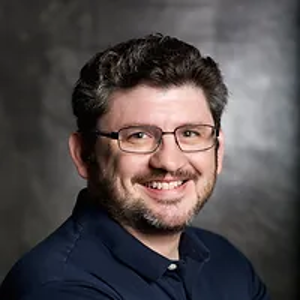 Prof. Roberto Abraham
Prof. Roberto AbrahamRoberto Abraham is a Professor of Astronomy and Chair of the David A. Dunlap Department of Astronomy and Astrophysics at the University of Toronto. He is a Fellow of the Royal Society of Canada and served as President of the Canadian Astronomical Society.
Prof. Abraham was born in Manila, grew up in San Francisco and Vancouver, and obtained his BSc from University of British Columbia before moving to the UK to obtain a doctorate from Oxford. He did postdoctoral work at the National Research Council of Canada’s Herzberg Institute and at Cambridge University. Prof. Abraham’s work is focused on observations of galaxy formation and evolution and on the development of innovative scientific instruments, such as the Dragonfly Telephoto Array. He has won numerous awards for his work, including the Jackson-Gwilt Medal awarded by the Royal Astronomical Society, the Canadian Astronomical Society’s P. G. Martin Award, an NSERC Steacie Memorial Fellowship, a Canada Council for the Arts Killam Research Fellowship, a Premier’s Research Excellence Award, and the University of Toronto Outstanding Teaching Award. He has served on the Board of Directors of major international observatories, advised NASA and scientific funding agencies in various capacities and served as Canada’s representative on the James Webb Space Telescope Advisory Committee.
In addition to being a professional astronomer, Prof. Abraham has never given up his love of backyard astronomy, which set him on the road to being a scientist at age 12. His secret life as an amateur astronomer has led him to place tremendous value on outreach, and on the role of astronomy in stimulating the growth of scientific literacy. Astronomy is the gateway science for encouraging young people to embark on a host of STEM careers. This enthusiasm for outreach has led to him serve as the Honorary President of the Toronto Centre of the Royal Astronomical Society of Canada for many years. (Here is a Pro Tip: if you love astronomy and you live in Canada, you should definitely be a member of the Royal Astronomical Society of Canada.)
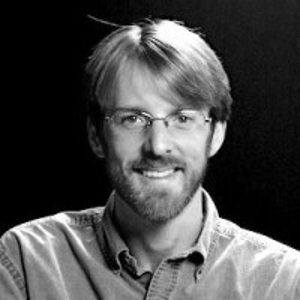 Prof. Keith Vanderlinde
Prof. Keith Vanderlinde Keith Vanderlinde studies the nature and evolution of large-scale structure in the Universe, as well as the evolution of the cosmos itself. Studying large-scale structure requires specialized instruments and Vanderlinde is a member of collaborations using and developing ones that are unique.
One such instrument is the South Pole Telescope (SPT). The SPT surveys the sky at microwave frequencies to reveal the Cosmic Microwave Background—a snapshot of the Universe less than 400,000 years after the Big Bang.
Vanderlinde is also a member of a cross-Canada collaboration operating an innovative, digital radio telescope near Penticton, B.C. The Canadian Hydrogen Intensity Mapping Experiment, or CHIME, is a radio array creating a three-dimensional map of the largest volume of the Universe ever. CHIME will also be an excellent detector of radio pulsars and the newly recognized phenomenon of fast radio bursts (FRBs). CHIME began science operations in the fall of 2017.
The group includes the Dunlap Institute, CITA, UBC, McGill University and the Dominion Radio Astrophysical Observatory (DRAO).
Vanderlinde is also a member of a team using the Algonquin Radio Observatory in northern Ontario and the Giant Metre-wave Radio Telescope in India to make ultra-high resolution observations of pulsars, using pockets in interstellar gas as billion-kilometre-wide lenses.
Vanderlinde received his PhD from the University of Chicago and joined the Dunlap Institute in 2013. He is also a 2014 TEDxToronto fellow.
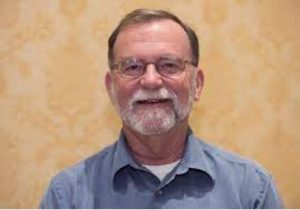 Prof. Rick Perley
Prof. Rick PerleyRick obtained his PhD from the University of Maryland in 1977, with a
thesis concerning low-frequency (20 — 110 MHz) imaging of radio galaxies using the east-west arm of the (now dismantled) Clark Lake Radio Telescope. He was next a postdoc at the Very Large Array, then under construction, from late 1977 to 1980, at which time he was promoted to staff astronomer. Except for brief sabbaticals to CalTech and the University of Toronto, he has been at NRAO ever since.
Rick was the Project Scientist for the Expanded Very Large Array project from 2001 to 2013, a technical upgrade to the existing Very Large Array which expanded its observational capabilities by orders of magnitude.
Rick’s research focuses on the polarized emission from radio galaxies
and quasars, for which he has been working to improve the polarimetric imaging capabilities for the JVLA and MeerKAT. He has lectured widely on radio interferometry, and is delighted to be able to again come to Toronto for the Dunlap Institute Summer School.
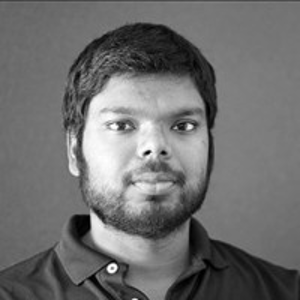 Prof. Suresh Sivanandam
Prof. Suresh Sivanandam Suresh Sivanandam studies the formation and evolution of galaxies in both the nearby and distant Universe.
One focus of his research is a cluster’s halo of gas and how it interacts with the gas in individual galaxies through the use of multi-wavelength (X-ray, optical, and infrared) datasets. Another is a spectroscopic survey of nearby galaxies to determine and how star formation impacted when these galaxies were formed. The survey will be conducted with a unique instrument Sivanandam and his collaborators have constructed: the Wide Integral-Field Infrared Spectrograph, or WIFIS, currently operating on the 2.3-metre Bok telescope at the Steward Observatory in Arizona.
In addition to WIFIS, Sivanandam is a key member in many projects that are focusing advancing instrumentation in adaptive optics and highly multiplexed spectroscopy (e.g. integral field spectroscopy) For example, he is leading the development of the Gemini Infrared Multi-Object Spectrograph, or GIRMOS, an infrared spectrograph for the Gemini Observatory, designed to produce high angular-resolution and highly sensitive spectra of the sky. GIRMOS’s primary science goal is to survey the distant universe in order to study the assembly of mass in high-redshift galaxies.
Sivanandam became an Assistant Professor at the Dunlap Institute in 2015 and was promoted to the rank of Associate Professor in 2021, and to Interim Director in 2023.
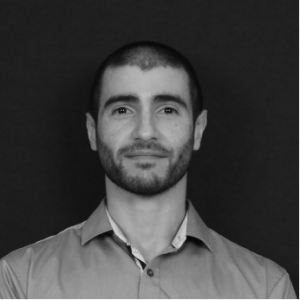 Prof. Juan Mena-Parra
Prof. Juan Mena-ParraJuan is an observational cosmologist that develops novel instrumentation and analysis techniques for studying the origin, composition, and evolution of the Universe.
Juan has played a crucial role in the development of the Canadian Hydrogen Intensity Mapping Experiment (CHIME), a ground-breaking radio telescope designed to measure the large-scale structure of neutral hydrogen and probe the nature of dark energy. Now that CHIME is performing the largest volume astronomical survey to date, one focus of his research is the development of calibration and data analysis techniques to characterize the instrument and separate the weak cosmic hydrogen signal from bright astrophysical foregrounds.
Juan’s technology innovations also enabled the use of CHIME to study the radio transient sky, including the mysterious fast radio bursts (FRBs). Thanks to its unique design and powerful digital backend, CHIME has become the world’s leading FRB detector, finding hundreds of FRBs each year. Juan is now working on the construction of CHIME/FRB Outriggers, a continental network of specialized radio telescopes that will provide precise localizations for FRBs detected by CHIME. These localizations will provide unique information about the physical environments and emission mechanisms that generate FRBs and allow their use as new probes of cosmology.
CHIME/FRB Outriggers represents the first phase of the Canadian Hydrogen Observatory and Radio-transient Detector (CHORD), a next-generation radio telescope array that will be an order of magnitude more powerful than CHIME and provide unprecedented observational capabilities for cosmology and radio transient science.
Before joining the Dunlap Institute in 2022, Juan was a Kavli Fellow at the MIT Kavli Institute for Astrophysics and Space Research. He received his PhD in Physics from McGill University in 2018.
 Prof. Kate Jackson
Prof. Kate JacksonI started working in astronomical instrumentation during a co-op work term in 2007 while pursuing an undergraduate degree in Astronomy and Physics at UBC. This experience inspired me to pursue graduate studies in Adaptive Optics (AO). During my PhD, I worked on the Raven Multi-Object AO technology demonstrator, which was installed on the Subaru telescope in 2013. I received my PhD in mechanical engineering from the University of Victoria in 2014 and joined the Graduate Aerospace Laboratory at the California Institute of Technology as a Post Doc. There, my research was focused on adaptive primary mirror segment technology for space telescopes and Zernike Wavefront sensor designs and applications. I returned to Canada to join the AO group at NRC-Herzberg Astronomy and Astrophysics in 2017 and continue in that position today. I am currently working on several Gemini AO instrument projects, the Thirty Meter Telescope’s facility AO system, and leading the ongoing development of REVOLT, an AO system and technology research testbed installed locally on the 1.2m telescope in Victoria BC.
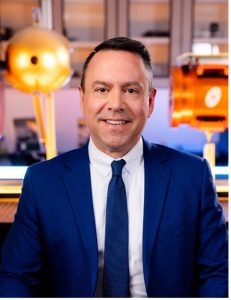 Prof. Don Figer
Prof. Don Figer Dr. Figer has a BA from Northwestern University with a triple major in Physics, Math, and Astronomy, an MS in Astronomy and Astrophysics from the University of Chicago, and a PhD in Astronomy from the University of California, Los Angeles.
Dr. Figer is a Professor in the College of Science and Founder and Director of the Rochester Imaging Detector Laboratory, Center for Detectors, and the Future Photon Initiative at RIT. He previously was co-founder and Director of the Independent Detector Testing Laboratory at the Space Telescope Science Institute where he led a team to do the competitive characterization of prototype infrared detectors for the James Webb Space Telescope. He has been PI on dozens of observational astrophysics and instrumentation development programs. Dr. Figer studies massive stars, young star clusters, and the Galactic center. He identified the Pistol star as one of the most massive known. He made the first direct measurement of an upper limit to the masses of stars and has discovered more evolved massive stars and massive star clusters in the Galaxy than any other researcher. Dr. Figer has authored over 200 publications with a total of 8,000 citations and has an h-index of 48.
Figer has received numerous awards for his work, including the NYSTAR Faculty Development Award, the NASA Space Act Award, and the AURA STScl Technology and Innovation Award.
Prof. Laurie Rousseau-Neptune
Coming soon!